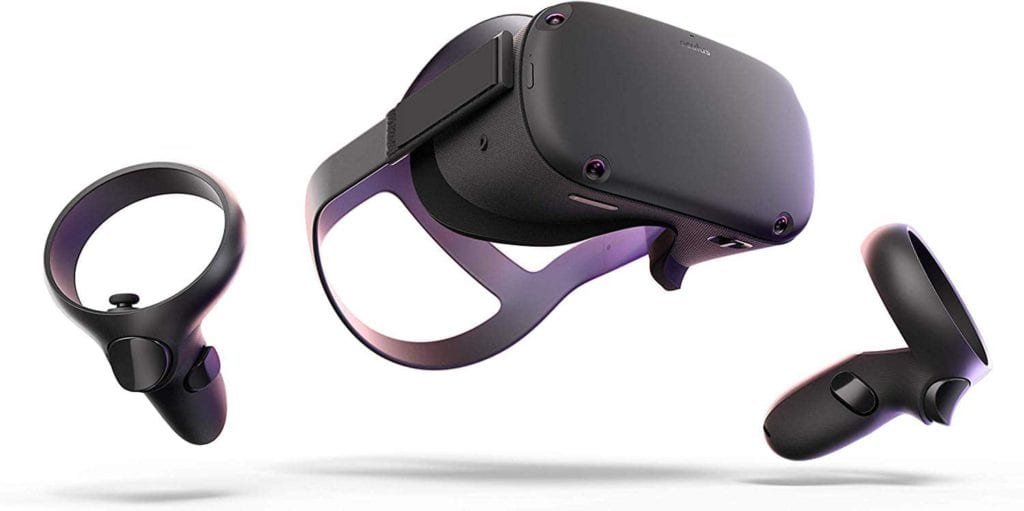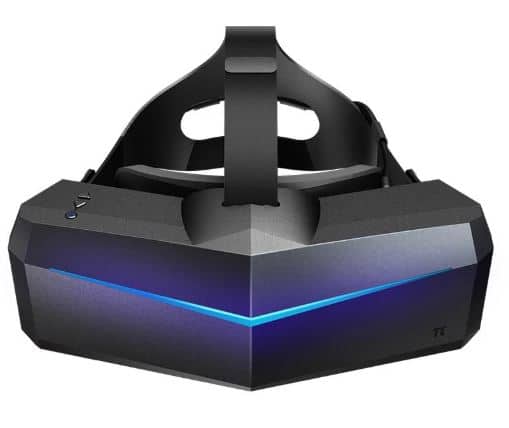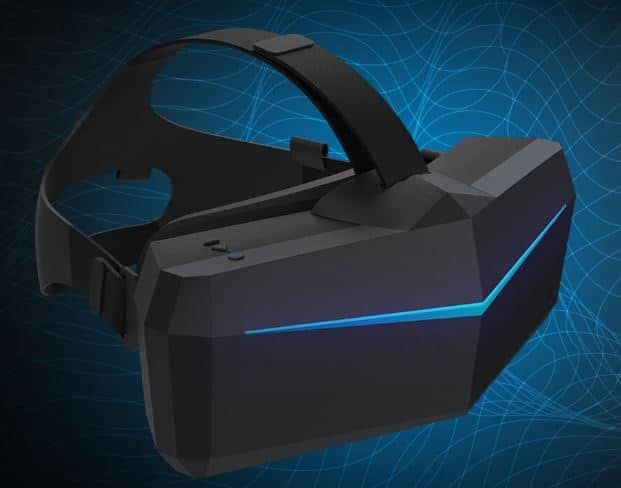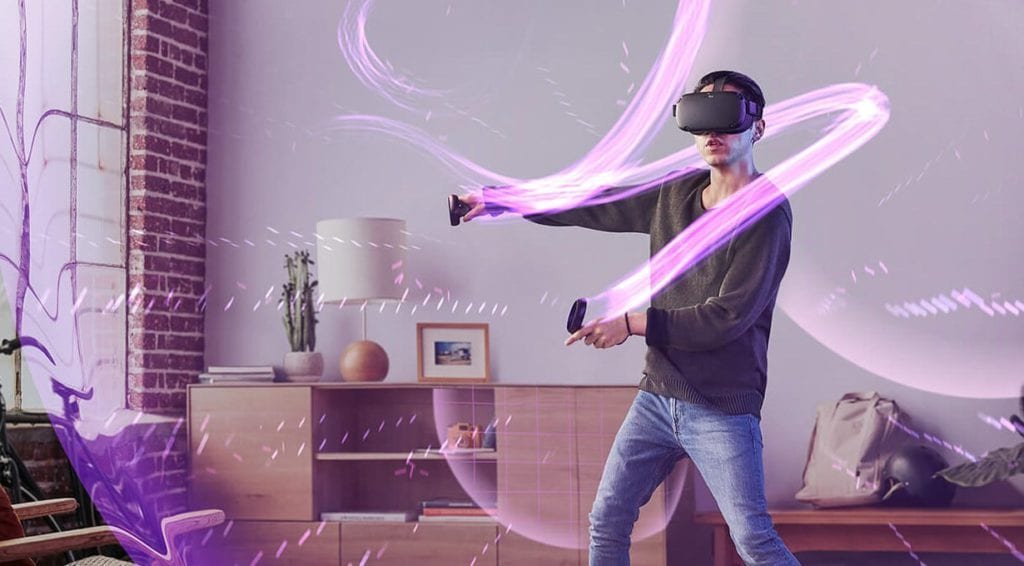Various companies are making VR headsets that are becoming more and more immersive. The Oculus Quest and the Pimax 8K are two headsets that are far from each other in terms of release dates.
However, these headsets are the favorites of most users because of their unique and powerful features. The Oculus Quest may have been made earlier but its capabilities keep up with newer headsets.
The Pimax 8K is a newer headset that was released back in 2018. It is a very large and very powerful headset that is perhaps the only headset that can display 4K images on both lenses.
That’s right, the name 8K does not actually mean that it displays 8K images. It can only display content with a 4K resolution on both lenses, and we’ll be talking about that later on.
These headsets are truly immersive and you will catch yourself unknowingly hooked with the kind of performance they give off. They will keep you attached to the virtual reality world for hours.

The Oculus Quest is one of the pioneers in making great VR headsets and you cannot deny that the more advanced Pimax 8K VR headset took some pointers from the Oculus Quest.
They perform well with games and are exceptional when it comes to the display and other features. That is why they are worthy of the recognition that they have earned for the past years.
So if you are looking for a headset that will give you the best experience whether you are a gamer or if you just want to get along with the trend in the virtual reality world, then these headsets will do the job.
Table of Contents
Oculus Quest Display and Resolution
As we have already mentioned, the Oculus Quest is one of the earliest headsets to have been developed. It has become the standard for most headsets and it packs an amazing display.
The Oculus Quest has a resolution of 1440 by 1600 pixels on each lens. This is a great resolution that offers the best details for any display that you want to project in it.
It shows the most detailed display on most VR headsets with a clean combination of colors. It does not take much to project this kind of resolution but Oculus did not hold back on the quality.
The Oculus Quest uses a Pentile OLED lens on each eye. This is one of the best screens that you can get as it does its best to erase the screen door effect on the pixels.
The lenses and the head mount display are also adjustable. It has the Interpupillary adjustment feature so that your eyes can focus on the images it displays no matter what grade your eyes are.
The Oculus Quest does a great job of projecting videos and games with highly-detailed graphics. It performs well and does not budge even when it comes to the latest-developed games.
4K Resolution
If you thought that was amazing, then the Pimax 8K has a better resolution for you that will bring gaming and watching videos on a whole new level with its advanced lenses.
The lenses of the Pimax 8K bring 2560 by 1440 resolution on each eye. This is an extremely detailed resolution that most headsets can only attain on both lenses.
That’s right, the Pimax 8K has the ability to put up detailed images on one lens alone that most VR headsets will struggle to do so even on both of their lenses.

This kind of resolution allows you to focus on an object that is at least 20 meters away from your eyes. This means that you will have full awareness of the objects and characters in your surroundings.
The Pimax 8K uses LED for the lenses so the colors are rich and realistic. The added LED background lights also bring a more immersive experience with much more depth.
Pimax also improved the color tweaking of the headset. The Pimax 8K is able to mix colors vividly and display the images it created in full brightness for maximum immersive experience.
Refresh Rate
The refresh rate is the ability of the headset to refresh its display in one second. This helps in making the movements and the display less obscured and more real-time.
When your headset has a high refresh rate, there will be no lags or glitches on the display. This is very helpful for people who get nauseous when they are inside the virtual reality world.
The Oculus Quest is not the most amazing when it comes to the refresh rates. It only has a refresh rate of 70Hz which is just enough for shooting games and fewer movements.
This is compatible with high-speed games but if you combine it with interactive content and high resolution, the Oculus Quest sometimes has a hard time displaying the movements in real-time.
As for the Pimax 8K, it is a little bit more complicated than most VR headsets. It includes a Dual Engine Mode so you can interchange the display and resolution as well as the refresh rate.
When you turn to the maximum resolution of 4K on each lens, the Pimax 8K requires more power from the engine so it compromises the refresh rate in this setting.

The optional 8K display is run by a less powerful 75Hz refresh rate. This is not the best refresh rate but it still allows the headset to run graphics smoothly on the exceptional resolution.
When you opt for a lower 2560 by 1440 resolution, the refresh rate of the Pimax 8K climbs up to 90Hz which is smoother. So really, you get to choose if you prefer the resolution over the speed or vice versa.
Another thing you should also consider when it comes to the refresh rate and the display of the Pimax 8K is that it requires a lot of power from a PC so you are going to need one powerful setup.
Oculus Quest Field of View
When it comes to the width of the display in VR headsets, you really cannot measure it just by the hardware. You need to get inside it to see how far it gets your peripheral view.
The Oculus Quest has a Field of View of 90 degrees. This is not the most impressive FoV on the market but it does well in games such as shooting games that require focusing on a single object.
To put that into perspective, a 90-degree Field of View is like sitting on the fifth row of a cinema. You get to see the whole screen but on the sides of your eyesight, you can still see the edges of the screen.
While this is a wide field of view, it can certainly be improved. A wider field of view will give you a lot of benefits especially when you are playing and you need to be aware of your surroundings.

Pimax 8K’s Best Feature
If you think the dual 4K resolution is the best feature of the Pimax 8K, then you are wrong. The best feature of this headset is all about maximizing the peripheral view of the user.
See, the Pimax is part of the lower 10% of headsets that has a field of view of 200 degrees. This is one of the reasons why the headset’s head mount display is oversized.
Here is a fun fact: the limit of our peripheral view is at 220 degrees. That means that the Pimax 8K comes close to the almost impossible width of display for humans.
This is such a huge leap for VR headsets. See, most VR headsets compete on the levels of 100 to 140 degrees Field of View but the Pimax 8K certainly surpasses all competitors.
This wide field of view makes the game more immersive. It lessens the factors that make users nauseous and it certainly adds to the details of most video games and other VR content.
Comfort
VR headsets will keep you hooked with hours and hours of possible games and entertainment. That is why it is important to find a headset that will bring comfort even if you use it for long periods of time.
The Oculus Quest is as simple as can be. It has a halo strap to secure the tightness of the headset and a strap that goes above your head to keep the height in line.
You can adjust these straps with velcro on the sides and the top of the head mount display. Oculus made the headset comfortable and is meant for long gaming hours.
The Pimax 8K also has the same orientation. It has a halo made out of plastic with soft cushions all around so that you can wear it without feeling the weight of the head mount display.
The back of the halo has added paddings so you can move your head up or down with comfort. It also has a thick strap that goes over the head to keep the headset in place.
The head mount display of the Pimax 8K also has a built-in cooling fan. This prevents overheating and sweating around the eyes when you wear the headset.
The Pimax 8K is heavy but it took us around 2 hours of continuous usage before we even felt the weight of the headset. The straps are very comfortable so there are no issues with that.
Controllers
The Oculus Quest is a pretty straightforward VR headset. This standalone headset sticks to that notion and it does not require setups for the tracking system.
The Oculus Quest has built-in cameras in the head mount display so it tracks the controllers with a 6 Degrees of Freedom. This is perfect for games where you need to move your hands a lot.
The Pimax 8K does not support inside-out tracking, instead, it has a full-positional tracking with the same degree of freedom as the Oculus Quest.
These headsets allow you to pull your hands back for games like archery or shooting and they keep accurate track of the movements of the controllers that represent your hands.

The Pimax 8K requires a setup for the tracking system but it also has an option called the Leap Motion Support which is a hand motion-tracker for a more fluid experience.
The controllers included in this VR headset are the Pimax Knuckle controllers. These are one of the most accurate controllers on the market because of the five-finger tracking system.
It also does not solely depend on the hands. When you wear the Pimax 8K, it automatically activates its Eye-tracking technology so the display knows where to focus.
This technology detects the user’s gaze so it can follow accordingly. When you look at one area, the Eye-tracking technology will focus on the part where your eyes are fixed.
Conclusion
The Pimax 8K will surely take over the VR world with how well it is being received. The impressive features of this headset are nothing like we have ever seen before.
It offers the best resolution in the market and a great field of view. It allows you to see all the possible angles on a game or in a video so it is probably the best choice.
However, the more classic and proven Oculus Quest does not go far. It still has a great display and resolution while giving functionality for gamers and other users.
It is completely wireless with a built-in headphone and it does not need a PC to power its systems. It tracks its own controllers and makes possible movements pretty limitless.
The downside with the Pimax 8K is that it requires a very powerful PC to run. Although it has a wireless option, you will not get the best of it if your PC setup did not reach the recommended specs.
That is why we still stick to the classic with this one. Besides, Pimax 8K is still under development and it will be improved in the future so unless you have a powerful PC setup, then the Pimax 8K is a tough choice.
If you like the post then do not forget to share it on social media!
Leave a Reply